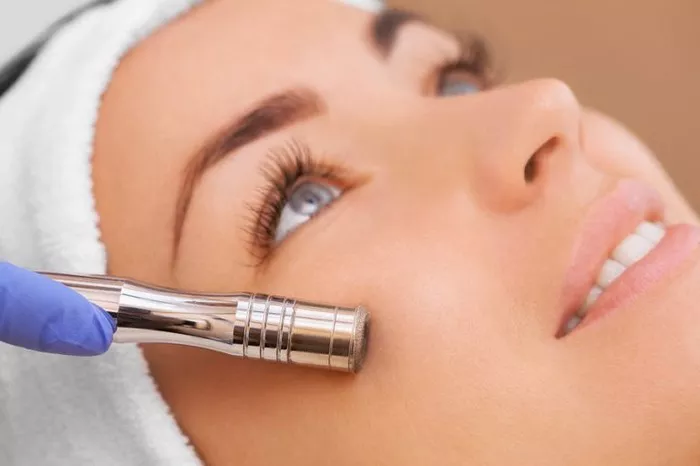Acne scars can be a persistent reminder of past acne breakouts, affecting one’s self-esteem and confidence. Many individuals seek effective treatments to reduce the appearance of these scars and achieve smoother, more even skin. Microdermabrasion is a popular skincare procedure that often comes up in discussions about addressing acne scars. In this comprehensive guide, we will explore the potential benefits and limitations of microdermabrasion in treating acne scars to help you make an informed decision about this non-invasive skincare technique.
Understanding Microdermabrasion
Microdermabrasion is a non-surgical cosmetic procedure designed to improve the overall texture and appearance of the skin. It involves the use of a specialized device that exfoliates the outermost layer of the skin, removing dead skin cells, debris, and impurities. This process stimulates collagen production and encourages the growth of new, healthier skin cells, resulting in a smoother, more youthful complexion.
Key features of microdermabrasion include:
Non-Invasive: Microdermabrasion is a non-invasive procedure, meaning it does not require incisions or the use of surgical instruments.
Quick and Painless: The procedure is relatively quick and generally painless, making it a convenient option for individuals seeking skin improvements without significant discomfort.
Multiple Benefits: Microdermabrasion can address various skin concerns, including fine lines, age spots, uneven skin texture, and acne scars.
Suitable for Most Skin Types: Microdermabrasion is generally safe and suitable for most skin types, with minimal risk of adverse reactions.
How Does Microdermabrasion Help Acne Scars?
Microdermabrasion offers several mechanisms through which it can help improve the appearance of acne scars. These include:
Exfoliation: The primary function of microdermabrasion is to exfoliate the outermost layer of the skin. By removing dead skin cells and surface debris, it can smooth the skin’s texture and reduce the visibility of superficial acne scars.
Collagen Stimulation: Microdermabrasion promotes collagen production, a protein essential for maintaining skin elasticity and firmness. Increased collagen can help fill in some types of acne scars, making them less noticeable.
Enhanced Absorption: After microdermabrasion, the skin is more receptive to topical treatments. This allows for better absorption of skincare products and serums designed to further improve skin tone and texture.
Improvement in Hyperpigmentation: In some cases, acne scars are associated with post-inflammatory hyperpigmentation, where the skin becomes discolored. Microdermabrasion can help fade hyperpigmentation, making scars less prominent.
It’s important to note that the effectiveness of microdermabrasion in treating acne scars may vary depending on several factors, including the type and severity of scars, the number of sessions, and the individual’s skin type and response.
Types of Acne Scars and Microdermabrasion
Microdermabrasion is generally more effective at addressing certain types of acne scars than others. The two primary types of acne scars are:
Atrophic Scars: These are shallow, depressed scars that result from a loss of tissue. They include ice pick scars, boxcar scars, and rolling scars. Microdermabrasion may provide some improvement in the texture and shallowness of atrophic scars, especially when performed over multiple sessions.
Hypertrophic and Keloid Scars: These scars involve raised tissue and are less likely to respond to microdermabrasion. In fact, microdermabrasion may not be suitable for hypertrophic or keloid scars and could potentially exacerbate their appearance.
Candidacy for Microdermabrasion
Determining whether microdermabrasion is a suitable treatment option for your acne scars requires careful consideration. Good candidates for microdermabrasion typically:
Have mild to moderate acne scars, especially atrophic scars.
Are seeking a non-invasive and relatively quick treatment option.
Have realistic expectations about the outcomes of microdermabrasion.
Do not have active acne breakouts in the treatment area.
Are in good overall health and do not have contraindications to the procedure.
Before undergoing microdermabrasion, it is essential to consult with a licensed skincare professional or dermatologist. They will assess your skin’s condition, discuss your goals, and determine whether microdermabrasion is the right choice for your specific type of acne scars and skin type.
Conclusion
Microdermabrasion is a non-invasive cosmetic procedure with the potential to improve the appearance of acne scars by exfoliating the skin, stimulating collagen production, and enhancing the absorption of skincare products. While it can be an effective treatment for some types of acne scars, it may not provide comprehensive results for all scar types.
If you are considering microdermabrasion for your acne scars, it is crucial to consult with a qualified skincare professional who can assess your individual needs and expectations. Together, you can develop a personalized treatment plan that aligns with your skincare goals and helps you achieve a smoother, more radiant complexion.

